Washington salmon forecasts come to light and nearly 4.0-million Puget Sound pinks are predicted to return that should have anglers blushing with joy this summer Leave a reply
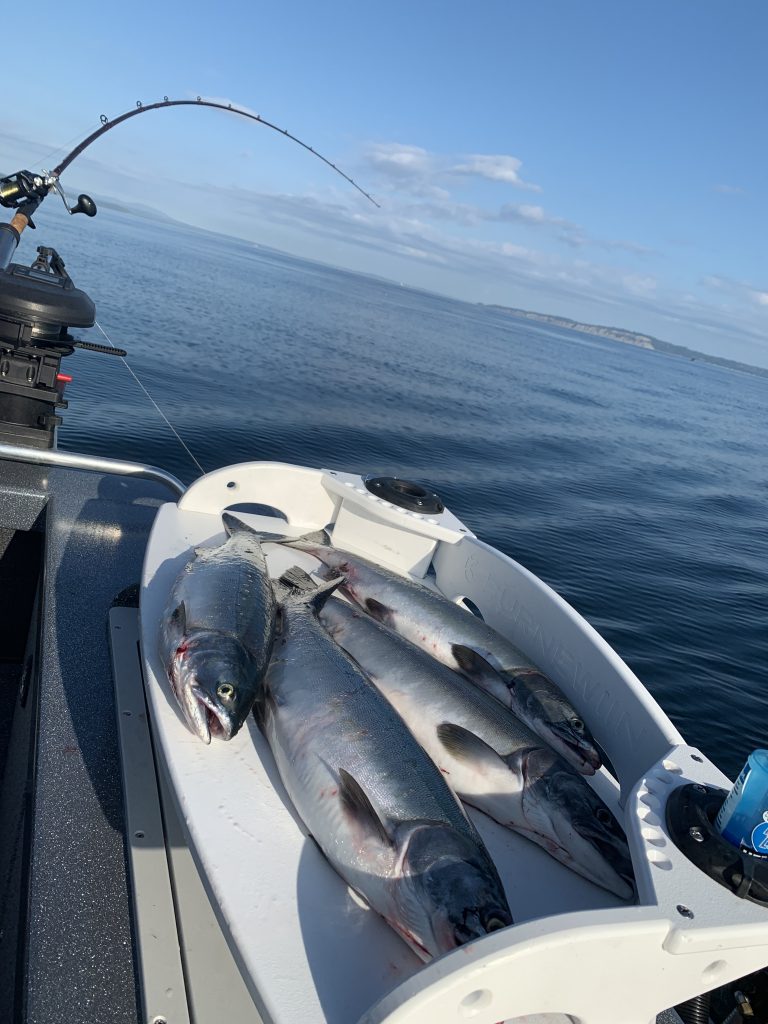
Contributed by Mark Yuasa, WDFW
WDFW fishery managers unveiled the 2023 salmon forecasts at a public meeting today (March 3) in Lacey, and it appears a decent number of pinks will arrive in late summer and in general Puget Sound, and the coast and Columbia River could see similarities to 2022.
Despite an improvement compared to 2022, the Washington Department of Fish and Wildlife (WDFW) fishery managers are cautious as some runs continue to struggle including those listed as threatened or endangered under the Endangered Species Act.
“Every year, our primary goal going into the North of Falcon process is to meet our targets for salmon conservation while still offering as much fishing opportunity as possible,” WDFW Director Kelly Susewind said in a news release. “We continue to expand our recovery efforts in Washington, but we still have a lot of work to do, and that means some fishing may be impacted again in 2023.”
Garnering most of the attention is a rather robust pink forecast of 3,950,917 – compared to 2,925,681 in 2021 and 608,388 in 2019 – which is predicted this summer for Puget Sound, Hood Canal, and Strait of Juan de Fuca. The 2023 pink forecast is very close to the 10-year average of 4-million pinks.
While relatively small (3 to 5 pounds), pinks are the fastest growing Pacific salmon species and return in bulk during odd-numbered years after spending two years in the ocean before migrating to natal rivers.
Pinks mainly spawn in lower river stretches, which is why they’re able to be less impacted by urban development, and don’t spend an extended time in the harsh freshwater environment.
Pinks provide a bonus fishing opportunity in the Strait of Juan de Fuca and Puget Sound as well as some local rivers. Fishing in Puget Sound was very good at times in 2021 and 2019 during August and September.
A breakdown by river shows a pink forecast in Nooksack of 24,997 (24,000 in 2021 and 24,476 in 2019); Skagit, 552,193 (927,300 and 114,769); Stillaguamish, 199,564 (51,607 and 47,929); Snohomish, 642,279 (555,929 and 128,362); Green, 821,681 (397,732 and 141,130); Puyallup, 397,255 (358,368 and 47,905); Nisqually, 454,281 (184,636 and 25,380); South Puget Sound, 382 (142 and 143); Hood Canal, 492,858 (174,244 and 70,675); and Strait of Juan de Fuca, 365,427 (35,723 and 7,629).
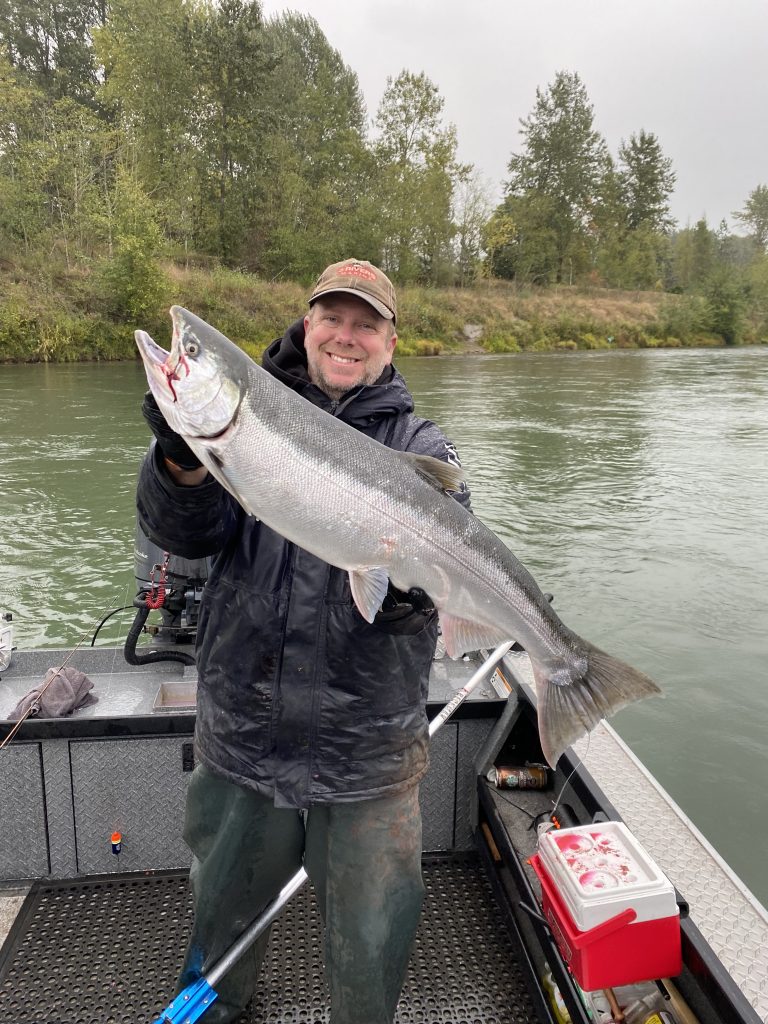
Puget Sound rivers saw strong pink runs from 2001 to 2009 and then they turned into the negative starting in 2011, 2013, 2015, 2017 before bouncing back in 2019.
Looking at the overall picture the Puget Sound-wide hatchery coho forecast shows an 16% improvement and wild coho are up 11% compared to 2022 forecast. The recent 10-year average for hatchery coho is up 50% and the wild coho is up 6%.
The combined Puget Sound hatchery and the wild coho forecast is 760,029 compared to 636,952 in 2022; 614,948 in 2021; 504,604 in 2020; 708,521 in 2019; and 557,149 in 2018.
The coast-wide hatchery coho forecast shows an 30% improvement and wild coho are up 2% compared to 2022 forecast. The recent 10-year average for hatchery coho is up 100% and the wild coho is up 53%.
The coastal coho forecast calls for 519,329 (216,687 are wild) in 2023 compared to 494,046 and 290,889 are wild in 2022.
In general, Puget Sound chum returns are improved over the 2019 and 2020 forecasts, but they pale in comparison from 2013 to 2018 when the combined forecasts were close to or above 1.5-million mark.
The 2023 fall Puget Sound/Hood Canal chum prediction is 650,618 (723,611 in 2022; 525,604 in 2021; 874,307 in 2020; and 1,035,835 in 2019).
In Hood Canal, the chum forecast is 231,153 (306,488; 273,396; 471,810; and 518,645) and southern Puget Sound is 231,137 (189,460; 121,078; 309,573; and 263,171). Other forecasts are 34,025 for Nooksack/Samish; 5,823 for Skagit; 15,449 for Stillaguamish; 11,814 for Snohomish; 109,081 for central Puget Sound; and 2,136 for Strait of Juan de Fuca.
The Lake Washington sockeye numbers remain poor with 21,851 forecasted in 2023 compared to 10,165 in 2022, 24,807 in 2021, 20,166 in 2020 and 15,153 in 2019. The lake’s spawning escapement goal is 350,000 before any fisheries can be considered.
The last time Lake Washington was open for sport fishing was 2006 when 453,543 returned. Since then, the run dipped dramatically to 25,123 in 2018 and 22,165 in 2009, but had 100,000-plus returns in 2017, 2013, 2012 and 2010.
Despite ramped up hatchery production at the Cedar River’s Landsburg Hatchery facility to mitigate the loss of sockeye, state, and tribal fishery biologists in 2021 looked for alternative ways to help boost recovery that included capturing and transporting fish from the Ballard Locks to the hatchery. A return of more than 38,000 in 2021 was the most since 2017.
Early indications by WDFW show this by-pass is a success but only time will tell. For many years, sockeye have been taken from the fish weir at the Cedar River mouth and transported directly to the hatchery to boost survival too.
There’s a myriad of barriers sockeye need to deal with from smolt predation in the lake by cutthroat trout, bass, yellow perch and northern pikeminnows as well as increased pre-spawn mortality rates, and extremely warm water, disease and low dissolved oxygen levels in the Lake Union Ship Canal and Lake Washington.
The Baker Lake sockeye forecast is 31,296 in 2023 up from 27,081 in 2022, 12,253 in 2021, 13,242 in 2020 and a tad under the 33,737 in 2019.
North of the border in British Columbia, the Fraser River sockeye forecast is 1.6 million and the pink forecast is 6.1 million.
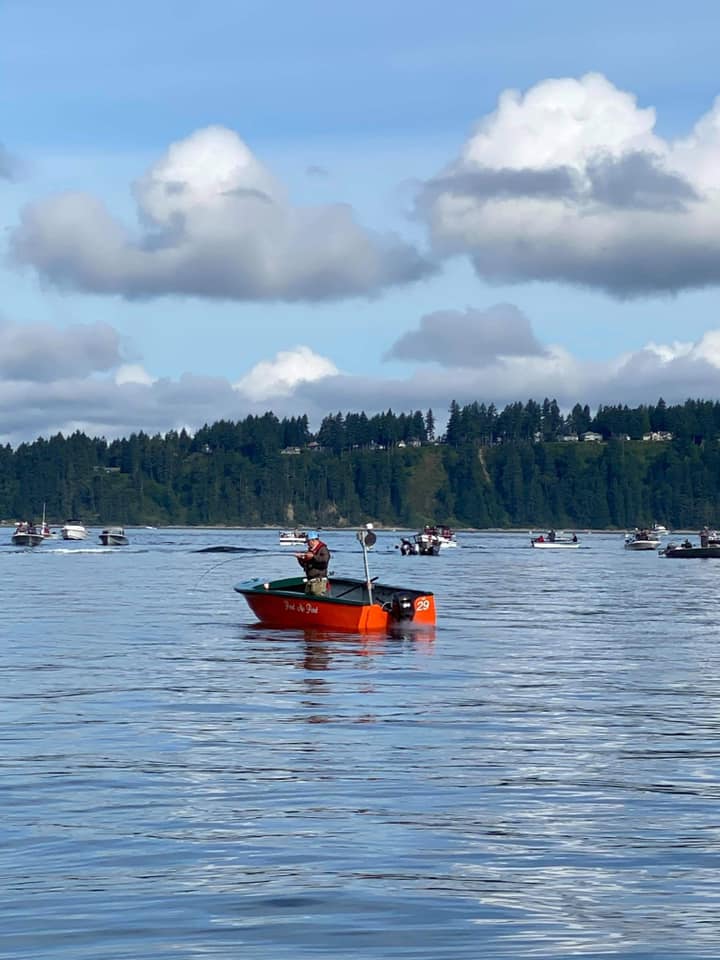
The 2023 Puget Sound hatchery Chinook forecast is up 34% but the wild forecast is down 29% from the recent 10-year average. The hatchery forecast is up 5% but the wild forecast is down 1% compared to the 2022 forecast. The total hatchery/wild numbers are up 22% from the 10-year average and up 4% from the 2022 forecast.
The 2023 Puget Sound-wide wild Chinook forecast is 29,780 (28,992 in 2022 and 26,918 in 2021) and the hatchery forecast is 229,038 (201,059 in 2022 and 202,185 in 2021).
Annual constraints of certain wild Chinook stocks include the usual suspects like the Stillaguamish, Skagit, and Snohomish.
The 2023 coastal hatchery Chinook forecast is up 7% and the wild forecast is up 8% from the recent 10-year average. The hatchery forecast is down 5% and the wild forecast is down 4% compared to the 2022 forecast. The total hatchery/wild numbers are up 7% from the 10-year average and down 4% from last year’s forecast.
The 2023 coastal Chinook forecast is 81,829 (39,153 are wild and 42,675 are hatchery).
The 2023 Willapa Bay Chinook forecast is 30,321 (2,833 are wild and 27,488 are hatchery); the coho forecast is 153,618 (42,663 and 110,955); and the chum forecast is 45,694 (44,575 and 1,119).
The 2023 Grays Harbor fall Chinook forecast is 12,024 (10,828 are wild and 1,196 are hatchery); and coho forecast 181,986 (96,629 and 83,356). The spring Chinook wild Chinook forecast is 1,132.
On the northern coast, the 2023 Quinault River coho forecast is 54,161 (23,595 are wild and 30,566 are hatchery). The Queets River coho forecast is 27,320 (12,414 and 14,906).
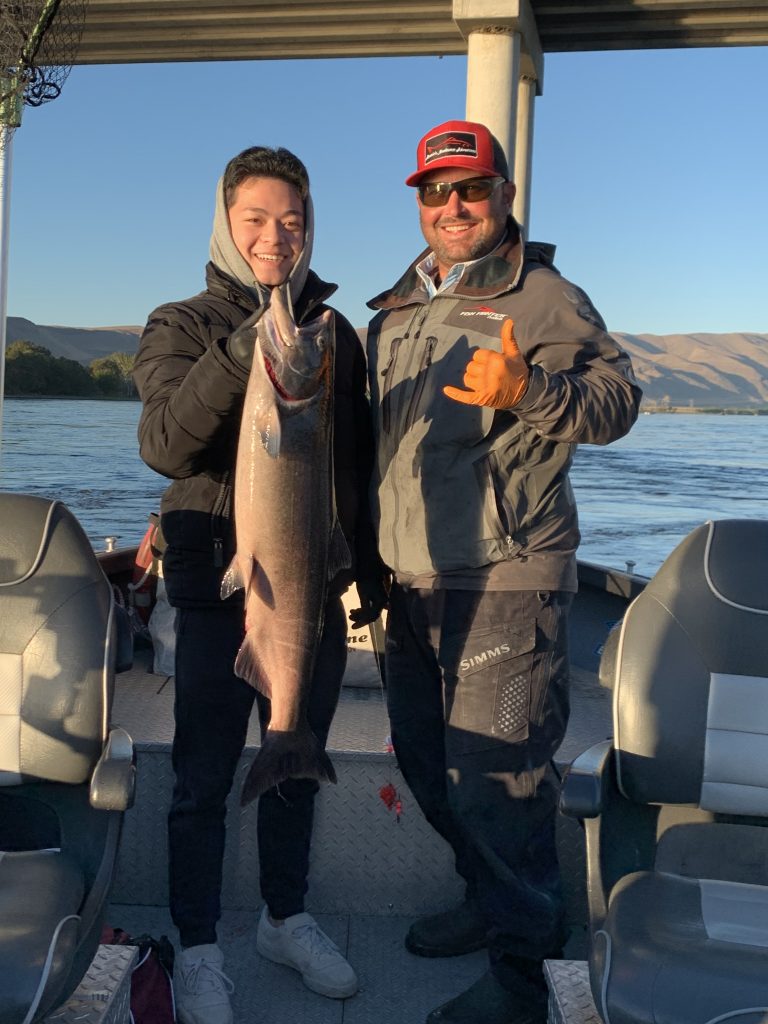
Columbia River could be a bright spot
The Columbia River fall Chinook forecasts appear better, and the forecast is 545,300 compared to forecast of 484,900 and an actual return of 674,786 in 2022. The 2023 forecast is like the recent three-year average return of about 577,000.
The bulk of the fall Chinook return is 136,100 for Bonneville Pool hatchery (91,200 and 258,300) and lower than last year’s historic high actual return, about 149% of the 10-year average return; and 272,400 for upriver bright (230,400 and 254,730) and is improved over last year’s actual return, about 66% of the 10-year average return.
A breakdown of the other fall Chinook forecast shows 77,100 for lower river hatchery (73,000 and 87,688 in 2022) and is lower than last year’s actual return, and about 94% of the 10-year average return; 8,600 for lower river wild (10,800 and 9,297) and is similar to last year’s actual return, about 45% of the 10-year average return; 4,300 lower river bright (8,700 and 3,023); 46,300 for pool upriver bright (70,200 and 60,417) and lower than last year’s actual return, about 49% of the 10-year average return; and 600 for select area bright (600 and 1,331) and is lower than last year’s actual return, about 8% of the 10-year average return. Forecasts for the Snake River wild wasn’t available but the 2022 forecast was 11,000.
In February, the Oregon Production Index – which provides ocean coho abundance forecasts – was released and revealed an estimated 1,135,700 coho to arrive off the Washington coast. That is down a bit from a forecast of 1,225,900 and an actual return of 887,500 in 2022.
The Columbia River subtotal forecast is 886,100 coho compared to 997,200 in 2022 and an actual return of 685,200. If the stars align for coho numbers, this should also generate some decent action in the Big-C (namely the Buoy-10 fishery at the mouth of the river) and its tributaries in late summer and fall.
The fall Chinook and coho returns destined to the Columbia River are also the bread and butter for ocean fisheries off Neah Bay, La Push, Westport and Ilwaco and in the Columbia River from Buoy 10 upstream.
While the actual coho forecast is down in 2023, state fishery managers have pointed out that an actual return of around 700,000 should create some happy faces on anglers.
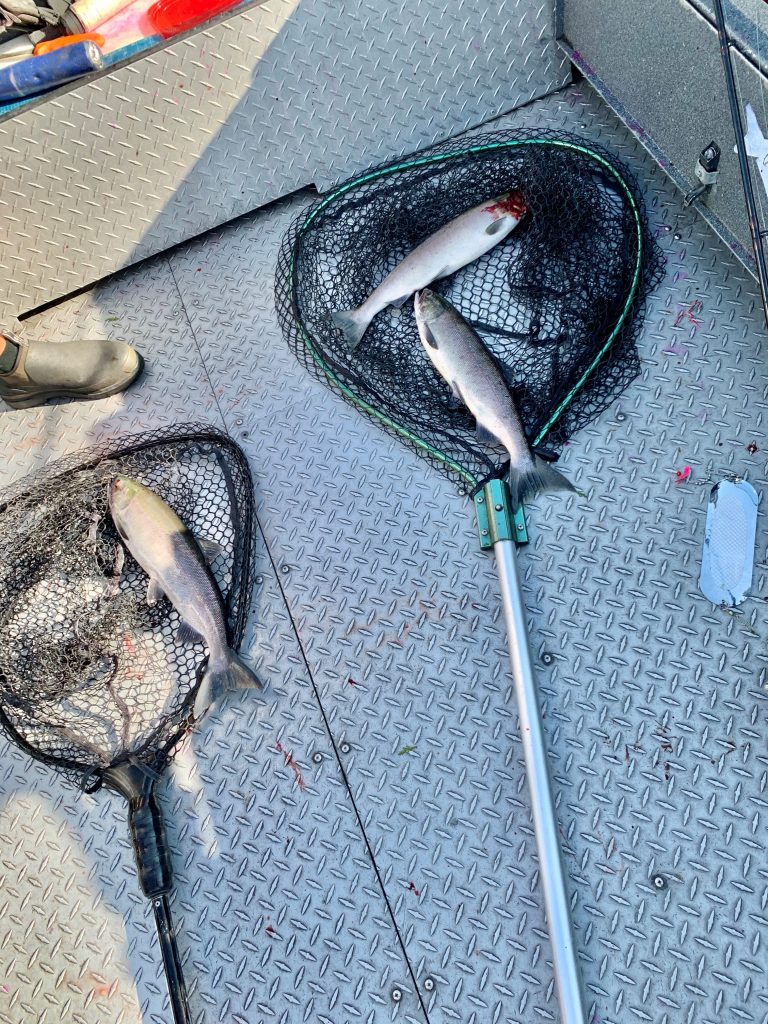
The Upper Columbia summer Chinook forecast of 84,800 in 2023 is up from a 2022 forecast of 56,300 and an actual return of 78,444. This run is the main driver for recreational fisheries from the Rocky Reach Dam to Chelan Falls as well as many other open areas further upstream and downstream.
The 2022 upper Columbia summer Chinook return was the seventh largest since 1980, totaling 78,494 adults, compared to the preseason forecast of 56,300 adults. The adult return was comprised of an estimated 53,595 Age-4 fish; 23,632 Age-5 fish; and 1,266 Age-6 fish. The 2022 return was 114% of the recent 10-year average (2012–2021) of 68,932 adults. The 2022 jack return of 10,777 fish at Bonneville Dam was greater than the recent 10-year average (10,327). The 2022 adult return was 116% of the average of returns observed since 2001, and more than four times the average return during the years 1980–2000 (17,425 adults).
The 2023 preseason forecast for Upper Columbia summer Chinook is expected to include 43,400 Age-4 fish; 40,800 Age5 fish; and 600 Age-6 fish. If accurate, this projection would represent the fourth highest return since 1980 and be 120% of the average return observed over the past decade. Note – This preseason forecast will be adjusted after the PFMC ocean fishery planning process is complete to account for expected effects of ocean fisheries.
The Columbia sockeye forecast is a modest 234,500 in 2023. In 2022, the forecast was 198,700 and the actual return hit a robust 664,935, which was the largest since Bonneville Dam was erected in 1938.
The huge 2022 return of sockeye to the Columbia River was two times the recent 10-year average return and was the largest return since at least 1938 when Bonneville Dam was first erected. The 2022 return included at least 147,473 Wenatchee; 513,317 Okanogan; and 2,329 Snake River stock sockeye returning to the Columbia River.
At Prosser Dam on the Yakima River, approximately 100 sockeye were counted. On the Deschutes River, sockeye passage at Round Butte Dam totaled approximately 100 fish. The Wenatchee return was 768% of forecast; the escapement objective of 23,000 fish to the Wenatchee River was met, with 135,837 sockeyes reported at Tumwater Dam. The Okanogan return was 292% of forecast.
The breakdown for 2023 Columbia River sockeye run includes 44,300 Wenatchee stock, 187,400 Okanogan stock, and 2,600 Snake River stock. The forecast is 73% of the 2013–2022 average total return of 323,107 fish.
The 2023 Wenatchee component is forecasted to be 68% of the 10-year average return. The return of Okanogan-origin fish is expected to be approximately 73% of the recent 10-year average. A return of 2,600 fish to the Snake River would be 230% of recent 10-year average return. Nominal returns to the Yakima and Deschutes rivers are also expected.
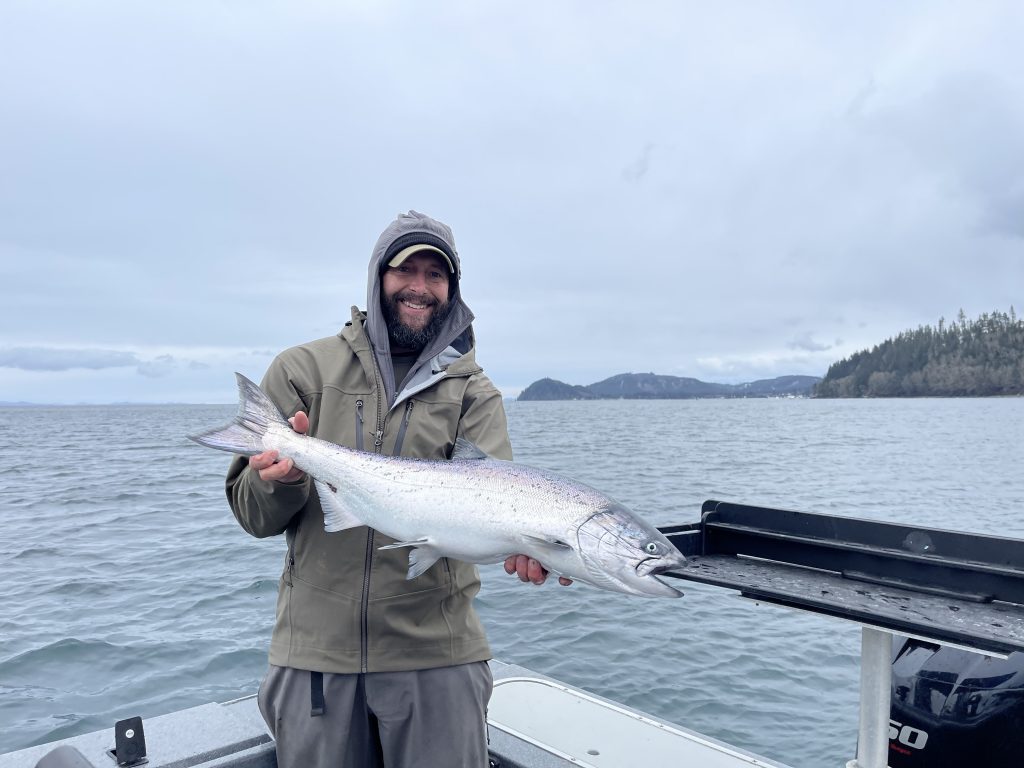
Three ocean salmon season options decided soon
The Pacific Fishery Management Council (PFMC) will announce three proposed ocean salmon season and quota options for waters three to 200 miles off the coast during meetings from March 5-10 in Seattle.
All the meetings are part of the month-long season-setting process known as North of Falcon, a term referring to waters north of Oregon’s Cape Falcon, which marks the southern border of management of Washington’s salmon stocks. This includes Puget Sound, Strait of Juan de Fuca, Columbia River, and coastal Washington salmon stocks.
State fishery managers use a suite of scientific data, including watershed sampling and monitoring, ocean indicators, and previous year returns, to estimate the number of salmon returning and decipher how many fish are available to catch.
The next steps in the season setting process are determining if there’s a harvestable surplus; propose fisheries and predict catches; model fisheries to shape which stocks are of conservation concern and constraining fisheries; negotiate with tribal co-managers and other states for equitable catch sharing plans and impacts on weak salmon stocks; and then finalize all fisheries in Washington, Oregon, and California.
All fishing seasons be finalized at the PFMC meetings on April 2-7 in Foster City, California.
For a complete meeting schedule with opportunities to participate in meetings and provide public feedback, visit WDFW’s North of Falcon public meetings web page.
(Mark Yuasa is a Washington Department of Fish and Wildlife Communications Manager. He also has contributed numerous blogs to the KIRO/ESPN The Outdoor Line and was the outdoor reporter at The Seattle Times for 28 years.)

